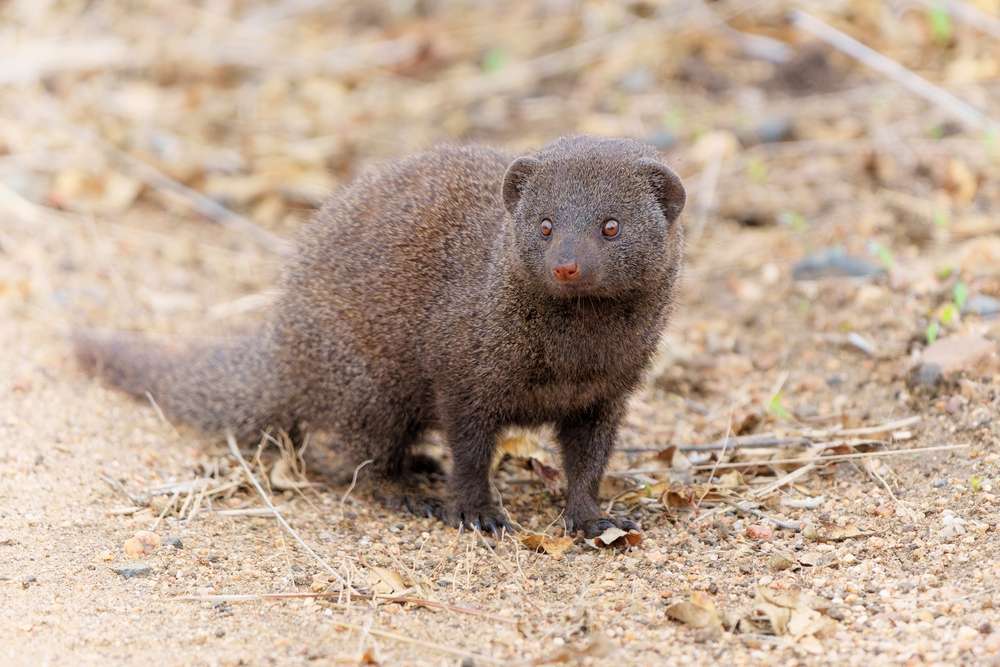Common Dwarf Mongoose
- Helogale parvula
- IUCN Status: Least Concern
- Trend: decreasing

- Kingdom: Animalia
- Phylum: Chordata
- Class: Mammalia
- Order: Carnivora
- Suborder: Feliformia
- Family: Herpestidae
- Genus: Helogale
Share:
General Information
The common dwarf mongoose is the smallest mongoose.
Description
The common dwarf mongoose has soft fur ranging from yellowish red to very dark brown. It has a large pointed head, small ears, a long tail, short limbs and long claws.- Length: 18–28 cm
- Weight: 210–350 g
Ecology & Behaviour
It is a highly social species that lives in extended family groups of two to thirty animals. There is a strict hierarchy among same-sexed animals within a group, headed by the dominant pair (normally the oldest group members). All group members cooperate in helping to rear the pups and in guarding the group from predators. Dwarf mongooses are territorial, and each group uses an area of approximately 30-60 hectares (depending on the type of habitat). They sleep at night in disused termite mounds, although they occasionally use piles of stones, hollow trees, etc. The mongooses mark their territory with anal gland and cheek gland secretions and latrines. Territories often overlap slightly, which can lead to confrontations between different groups, with the larger group tending to win. They form a mutal relationship with the Hornbill bird in order to warn each other of predators and to forage together. The common dwarf mongoose is primarily carnivorous, though it is an opportunistic omnivore. It’s diet consists of mostly Insects, other options include: lizards, rodents, snakes, birds, amphibians, fruits, carrion and eggs. These mongooses do not migrate except to establish their own territory away from their mother’s range.
Conservation
It is listed as “Least Concern” on the IUCN Red list.
Distribution & Habitat
The common dwarf mongoose is a mongoose species native to Angola, northern Namibia, South Africa, Zambia and East Africa. It is especially common in areas with many termite mounds, where it prefers to sleep. It generally avoids dense forests and deserts.
Interaction with Humans
The common slender mongoose has been targeted by extermination efforts in the past, due to its potential to be a rabies vector and the fact that it sometimes kills domestic poultry. These efforts have not been conspicuously successful, although some subspecies may be threatened. It is in no immediate danger of extinction.
No donation to this project yet.
| M | T | W | T | F | S | S |
|---|---|---|---|---|---|---|
| 1 | 2 | 3 | 4 | 5 | 6 | |
| 7 | 8 | 9 | 10 | 11 | 12 | 13 |
| 14 | 15 | 16 | 17 | 18 | 19 | 20 |
| 21 | 22 | 23 | 24 | 25 | 26 | 27 |
| 28 | 29 | 30 | 31 | |||


